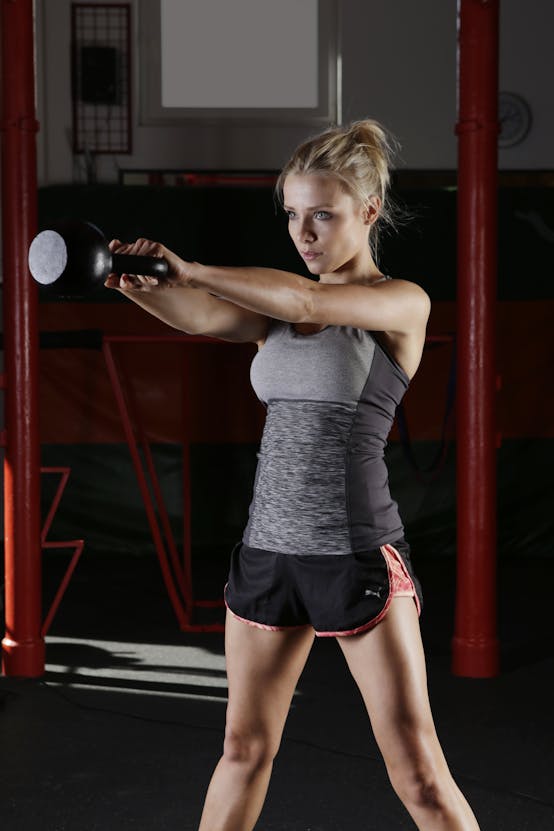Unlocking Explosive Power: A Guide for UK Basketball Players to Harness Plyometrics
Understanding Plyometrics and Its Benefits
Plyometric training, often referred to as jump training, is a method of strengthening muscles, particularly in the context of explosive power. For UK basketball players, incorporating plyometrics into their training regimen can be a game-changer, enhancing their vertical jump, speed, and overall performance on the court.
What is Plyometric Training?
Plyometric training involves high-intensity movements that aim to improve muscular power and speed. These exercises typically include jumps, hops, and bounding movements that are designed to maximize the force generated by the muscles in the shortest possible time. This type of training is not limited to basketball; athletes from various sports, including football and the Australian Football League (AFL), also benefit from plyometrics to enhance their power and speed.
Topic to read : Boosting Mental Performance: The Role of Meditation for UK Basketball Players
The Science Behind Plyometrics
The effectiveness of plyometric training lies in its ability to improve the neuromuscular connection, allowing athletes to generate more force quickly. A study on the impact of plyometric training on vertical jump height found that such training significantly improves vertical jump performance in healthy individuals[1].
Building a Plyometric Training Program
To harness the full potential of plyometrics, UK basketball players need to structure their training program carefully. Here’s a step-by-step guide to help you get started:
Also to discover : Top Strategies for UK Basketball Players to Prevent Overuse Injuries and Stay at Peak Performance
Assessing Current Strength and Power
Before diving into plyometric training, it’s crucial to assess your current strength and power levels. This can be done through various tests such as the vertical jump test, squat jump, and box jump. Coaches and strength conditioning specialists like Jack McLean emphasize the importance of baseline testing to tailor the training program to the athlete’s specific needs.
Phases of Plyometric Training
Plyometric training can be divided into several phases, each with its own set of exercises and intensity levels.
-
Initial Phase:
-
Focus on lower-intensity plyometric exercises such as bodyweight squats, lunges, and step-ups.
-
Incorporate basic jumping drills like single-leg hops and box jumps.
-
Aim for 2-3 sessions per week.
-
Intermediate Phase:
-
Increase the intensity by adding weight or resistance bands to your exercises.
-
Introduce more complex movements like depth jumps and lateral bounds.
-
Maintain 2-3 sessions per week but increase the volume and intensity.
-
Advanced Phase:
-
Incorporate high-intensity plyometric exercises such as single-leg depth jumps and multi-directional bounds.
-
Reduce the frequency to 1-2 sessions per week but increase the intensity and volume.
Sample Plyometric Exercises
Here are some key exercises to include in your plyometric training program:
-
Box Jumps:
-
Stand in front of a box or bench.
-
Jump up onto the box and immediately step down to the starting position.
-
Repeat for 3 sets of 10 reps.
-
Depth Jumps:
-
Stand on a box or bench.
-
Jump down to the ground and immediately jump up as high as possible.
-
Repeat for 3 sets of 10 reps.
-
Lateral Bounds:
-
Stand with your feet shoulder-width apart.
-
Jump sideways to one side and immediately jump back to the starting position.
-
Repeat on the other side.
-
Do 3 sets of 10 reps on each side.
Integrating Plyometrics into Your Strength Training
Plyometric training is most effective when combined with a comprehensive strength training program. Here’s how you can integrate both:
Strength Training Basics
Strength training is the foundation of any athletic development program. It helps build the necessary strength and power that plyometric exercises can then enhance. Focus on exercises like squats, deadlifts, and lunges that target the major muscle groups.
Weight Room Essentials
The weight room is where you build the strength that plyometrics will amplify. Here are some essential exercises to include:
-
Squats:
-
Stand with your feet shoulder-width apart.
-
Lower your body down until your thighs are parallel to the ground.
-
Push back up to the starting position.
-
Do 3 sets of 8-12 reps.
-
Deadlifts:
-
Stand with your feet shoulder-width apart.
-
Bend down and grab a barbell with your hands shoulder-width apart.
-
Lift the barbell up to hip level and then lower it back down.
-
Do 3 sets of 8-12 reps.
-
Lunges:
-
Stand with your feet together.
-
Take a large step forward with one foot.
-
Lower your body down until your back knee almost touches the ground.
-
Push back up to the starting position.
-
Do 3 sets of 10 reps on each leg.
Combining Strength and Plyometric Training
Here’s an example of how you can combine strength and plyometric training in a weekly program:
| Day | Strength Training Exercises | Plyometric Exercises |
|---|---|---|
| Monday | Squats, Deadlifts, Lunges | Box Jumps, Lateral Bounds |
| Wednesday | Leg Press, Leg Extensions, Calf Raises | Depth Jumps, Single-Leg Hops |
| Friday | Glute Bridges, Step-Ups | Multi-Directional Bounds, Burpees |
Recovery and Injury Prevention
Recovery and injury prevention are crucial components of any training program, especially when it involves high-intensity activities like plyometrics.
Importance of Recovery
Recovery allows your muscles to repair and rebuild, making them stronger and more resilient. Here are some recovery strategies:
-
Rest and Sleep:
-
Ensure you get at least 7-8 hours of sleep each night.
-
Take rest days as needed, especially after intense training sessions.
-
Nutrition:
-
Focus on a balanced diet rich in proteins, carbohydrates, and healthy fats.
-
Stay hydrated by drinking plenty of water throughout the day.
-
Stretching and Foam Rolling:
-
Incorporate stretching and foam rolling into your daily routine to reduce muscle soreness and improve flexibility.
Common Injuries and Prevention
Plyometric training, like any high-intensity activity, comes with a risk of injury. Here are some common injuries and how to prevent them:
-
Hamstring Injuries:
-
Warm up thoroughly before training sessions.
-
Incorporate hamstring-specific exercises like deadlifts and leg curls into your strength training program.
-
Knee Injuries:
-
Use proper form during plyometric exercises to avoid putting unnecessary stress on your knees.
-
Strengthen your core and glutes to provide better stability and support for your knees.
Practical Insights and Actionable Advice
Here are some practical tips and advice from experienced coaches and athletes:
Coach’s Perspective
” Plyometric training is not just about jumping high; it’s about generating power quickly. Make sure your athletes understand the mechanics and execute the movements correctly to avoid injuries,” says Jack McLean, a renowned strength and conditioning coach.
Athlete’s Experience
“I started incorporating plyometrics into my training program, and it completely transformed my game. I can jump higher, run faster, and recover quicker. It’s been a game-changer for me,” says a UK basketball player who has seen significant improvements in their performance.
Plyometric training is a powerful tool for UK basketball players looking to enhance their explosive power and overall performance. By understanding the science behind plyometrics, building a structured training program, integrating it with strength training, and focusing on recovery and injury prevention, athletes can unlock their full potential.
Here is a detailed bullet point list summarizing the key points:
-
Assess Current Strength and Power:
-
Conduct baseline tests to determine current strength and power levels.
-
Use tests like vertical jump, squat jump, and box jump.
-
Structure Plyometric Training:
-
Divide training into initial, intermediate, and advanced phases.
-
Increase intensity and complexity as you progress.
-
Combine with Strength Training:
-
Focus on exercises like squats, deadlifts, and lunges.
-
Incorporate plyometric exercises 2-3 times a week.
-
Prioritize Recovery:
-
Ensure adequate rest and sleep.
-
Maintain a balanced diet and stay hydrated.
-
Incorporate stretching and foam rolling.
-
Prevent Injuries:
-
Warm up thoroughly before training sessions.
-
Use proper form during exercises.
-
Strengthen supporting muscles to reduce injury risk.
By following these guidelines and integrating plyometric training into your regimen, you can achieve peak performance, reduce the risk of injury, and dominate the game. Remember, it’s not just about the training; it’s about how you recover and adapt over the long term.













